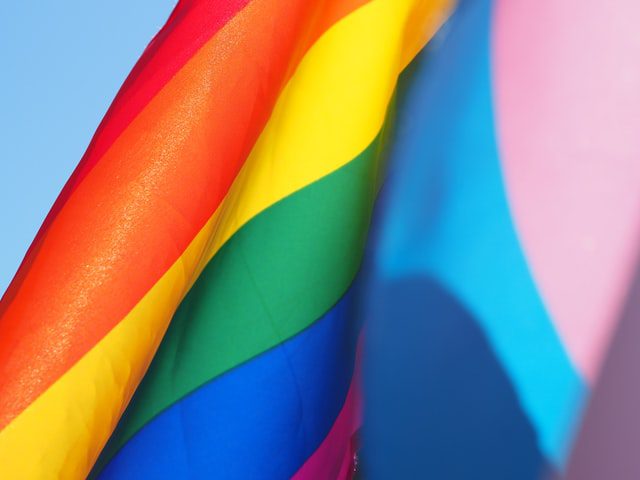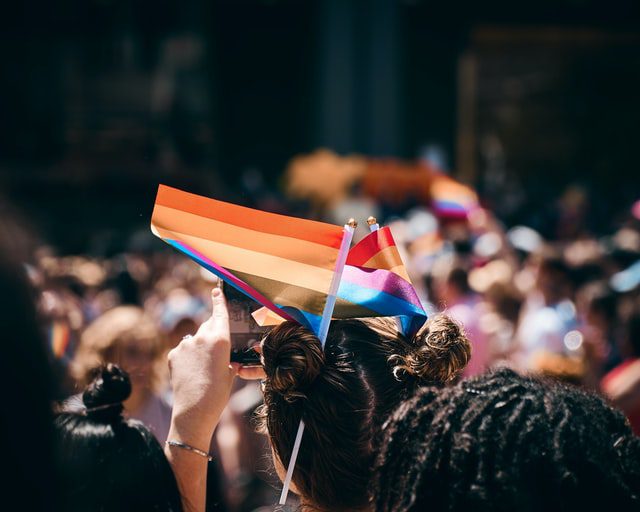
More On Transgender Definitions
A transgender person has a gender identity or a gender expression distinct from their sex assigned at birth. The term "transgender" is an umbrella term that includes individuals whose gender identity is the direct opposite of their assigned sex, as well as those who identify as non-binary or genderqueer.
Many transgender people seek a gender transition from their current sex to another and are then referred to as transsexual women or transsexual men. The term transsexual, however, is a bit more exclusive to a certain community.
Being a transgender person does not definitively determine your sexual orientation. Trans people can have any sexual orientation ranging from heterosexual to asexual. Gender identity differs from sexual orientation in every way.
People whose gender identity aligns with their sex assigned at birth are referred to as cisgender individuals. This gender identity is said to be the opposite of transgender identity.
Transgender congruence refers to the extent to which a person feels authentic and comfortable in their physical appearance and accepts their true gender identity. There are various measures to be taken to ensure that a transgender person's gender expression accurately reflects their gender identity, which may alleviate some of the anxiety associated with gender dysphoria.
Such measures include receiving hormone replacement therapy, psychotherapy, and sex reassignment surgery. Not all transgender people proceed with these treatments due to medical, financial, or personal reasons.
To summarize, the term "transgender" refers to a person whose gender identity or gender expression does not conform to the characteristics generally associated with the sex they were assigned at birth.
Detailed Glossary

Sex
A person's sex describes whether they are classified as male or female. A birth certificate states the sex assigned at birth for every infant. This information is largely based on the external reproductive organs of the infant. In truth, sex is determined by a combination of biological characteristics such as hormones, internal as well as external reproductive organs, chromosomes, and secondary sex characteristics.
Sex Assigned At Birth:
When a child is born, the doctor in charge will assign sex to the said infant based on their sexual organs. This tends to follow the title 'male' or 'female,' but some may be considered intersex (depending on chromosomal features, etc.).
Infants that are not born intersex are therefore assigned male at birth (AMAB) or assigned female at birth (AFAB). Again, this emphasizes doctors' role in the assignment of sex upon birth.
Gender Identity
Gender identity refers to an individual's deeper sense of gender. Gender identities are very diverse and personal in nature. Cisgender people have gender identities that align with their sex assigned at birth. Transgender people have gender identities that differ from their sex assigned at birth. Some people do not identify with the traditional binary of male or female. These individuals are referred to as nonbinary people or genderqueer people. We will elaborate on these identities further on. Gender identity does not always manifest in a physical form but is rather an internal sensation.
Gender Expression
A person's gender expression manifests physically through a person's pronouns, name, clothing, behavior, and haircut, among other bodily characteristics.
The description of being feminine or masculine is relative to culture and time. It is common for transgender people to want to align their gender expression with the gender they identify as instead of their sex assigned at birth.
Sexual Orientation
Sexual orientation refers to an individual's enduring physical, emotional, and romantic attraction to another person and is completely unrelated to one's gender identity.
Transgender people can have any sexual orientation regardless of their gender identity. For example, if a biologically female woman transitions to become a transgender man who is solely attracted to women, he is a straight man.
Transgender
Also referred to as "trans," transgender is a wide umbrella term that describes people who have a gender identity that differs from the sex they were assigned at birth. It is important to know that transgender identity does not in any way depend on medical or physical procedures, but many transgender people decide to undergo hormone therapy and/or sex reassignment surgery to be able to better express their gender identity. A large variety of many terms can be used to describe different transgender people. Be sure to use the terms that the individual person prefers.
Transsexual
The word "transsexual" first originated in the psychological and medical industries. The term transsexual is still preferred by many people who have permanently transitioned or wish to do so by medical procedures such as hormone therapy or gender confirmation surgery.
It is important to note that not all transgender people identify as transsexual. It is always a good idea to first ask a transgender person which term they prefer rather than making assumptions and using the term "transsexual".
Trans
This term can be used to describe any number of the gender identities under the transgender umbrella. It is short for either transgender or transsexual. The term "trans" should, however, be avoided as far as possible unless it is used in a direct quote. This is largely because it is not widely understood and might be perceived as being too vague to accurately describe a person's gender identity.
Cross-dresser
The term "cross-dresser" commonly refers to a man who occasionally dresses up in women's clothing and wears makeup and other accessories that are culturally associated with women. It is typical for cross-dressers to identify as heterosexual. Cross-dressers do not desire to become a woman permanently but rather express their gender by physically dressing up as one from time to time.
Transition
Altering one's sex assigned at birth to become a transgender woman or a transgender man is a multi-step complex procedure that may involve personal, legal, and medical aspects.
These steps include telling one's friends, family, and co-workers; using new pronouns; using a different name; possibly dressing differently; hormone therapy; changing one's sex and name on identity documents; possibly surgery, depending on one's individual needs.
Sex Reassignment Surgery
This is also referred to as gender confirmation surgery and refers to a surgical intervention that may or may not is included in the transition process. It is, however, not a necessity to alter your biological sex in order to fully express your gender identity. It is simply another way for people to become their authentic selves if their bodies tend to worsen their gender dysphoria. Never refer to transgender people as being pre-op or post-op. Avoid using the phrase "sex change operation".
Gender Dysphoria
Previously referred to as gender identity disorder, gender dysphoria is a term that describes a general sense of unease that a person may experience when their gender identity does not match their biological sex.
This feeling of unease could be so severe that it leads to anxiety and depression. Because of this, most medical professionals recommend that hormonal treatment or medical procedures should be considered based on each individual and how they wish to approach their gender expression.
Cisgender
"Cis-" is a prefix that means "on the same side" in Latin. This term describes people who, unlike transgender people, identify with the sex they were assigned at birth. Non-transgender people is a wider term for cisgender individuals.
Gender Nonconforming
Gender nonconforming people express genders who fall outside of the conventional assumptions about femininity and masculinity. It is important to understand that not all gender-nonconforming people have transgender identities. Similarly, not all transgender people are gender nonconforming.
Having a gender expression that does not conform to conventional gender identities or gender binary does not necessarily make you transgender. Thus, gender nonconformity is unrelated to transgender identity and should only refer to self-identified gender-nonconforming people.
Non-binary and/or genderqueer
Some people find that their gender identity does not fall within either male or female binary. They may feel like they belong somewhere in between these two genders or are completely disconnected from both. The terms non-binary and/or genderqueer should only be used to describe people who have self-identified as belonging to this community. It is not a synonym for transgender or transsexual.
To be non-binary is to identify with a gender identity that challenges the notion of there existing only two distinct gender identities. Non-binary gender identity does not lean exclusively toward one gender identity or another. Instead, it is gender non-conforming.
Transgender Names, Pronouns And Their Use
Personal Pronouns
The use of pronouns such as 'he/she' speaks to the notion of there only being two genders -man and woman. When someone is non-binary, this idea falls away, and the fluidity of gender translates in the pronouns one goes by -often they/them, these are known as gender-neutral pronouns. It is essential to ask strangers what their personal pronouns are.
The spectrum along which gender identity exists means that gender expression can take multiple forms; one can present or express their gender fluidity in ways perceived as masculine, feminine, neutral, or everything at once.
Use A Transgender Person's Chosen Name
Regardless of whether or not a transgender person could legally change their name in court, you should always call them by their chosen name. The legalities do not influence the fact that they wish to be called by the name that supports their gender identity.
Use The Correct Pronoun
A person should always be referred to by using the pronouns that correlate with their gender identity. It does not matter if they have undergone any form of medical treatment. Their individual gender identity should always be respected. If you are unsure about which pronouns a person uses, kindly share your own pronouns and ask them to do the same.
If, by accident, you refer to someone using the wrong pronoun, offer a sincere apology and focus on not making the same mistake again.
If, for some reason, you find it unsuitable to ask a transgender's pronouns, use the pronouns that are consistent with their outer appearance. Alternatively, you can be safe and just use the singular pronoun "they."
It is, for example, usually safe to assume that feminine pronouns are applicable to a person who is wearing a dress and uses the name Sarah. Each person should be granted the freedom to express their gender in any way that suits their needs.
It Is Common For People To Use The Pronoun They To Express Their Non-binary Gender Identity Or Expression
The singular they pronoun can be used to refer to people who do not identify as exclusively male or female. It is common for individuals who identify as non-binary to use pronouns them and they.
Let's Evaluate Problematic And Preferred Terms
Problematic:
Transgenders/a transgender
The word "transgender" should be used as an adjective instead of a noun or verb. Example of problematic use of the word "transgender":
"He is a transgender."
"This place is open to transgenders."
Preferred:
A transgender person/ transgender persons
"She is a transgender woman."
"He is a transgender man."
"This place is inclusive to transgender people/persons."
Problematic:
Transgendered
The word "transgender" should be used as an adjective, but the suffix "-ed" should never be tacked onto the end. The same goes for descriptions of other transgender identity terms and other members outside of the transgender community as well.
You would not say, "Elton John is gayed," therefore you would also not say, "Chaz Bono is transgendered."
Preferred:
Transgender.
The adjective "transgender" is a standalone adjective.
"They are transgender women."
"They are transgender people."
Problematic:
Transgenderism
This term is not commonly used by members of the transgender community but rather by anti-transgender activists who wish to reduce a transgender person's gender identity to a condition.
The switch from using the term "gender identity disorder" to "gender dysphoria" was a step in the right direction to achieve transgender equality and respect towards all gender expressions. Let's not belittle a person's identity by making it seem like a medical diagnosis or a mental illness.
Preferred:
Being transgender
Refer to transgender people as "being transgender." Other preferable terms include "the transgender community" and "the movement for transgender equality."
Problematic:
Sex change, pre-operative, post-operative
Using terms such as a "sex change operation" or being "pre- or post-operative", implies that one's gender identity can only be realized by getting surgery to undergo a gender transition.
Surgery should never be a determining factor of transgender identities, so avoid emphasizing the concept of surgery when discussing the transition process of transgender people.
Just because you were assigned male at birth does not make you any less of a trans woman if that is what you identify as. The same is applicable for gender-affirming surgeries. Transgender people have absolutely no obligation to alter their biological sex in order to confirm their identification as male or female.
Preferred:
Transition
With or without a surgical procedure, trans women and men have undergone a transition.
Problematic:
Biologically male, biologically female, born a man, born a woman, genetically male, genetically female.
Phrases like these are just as outdated and inappropriate as using the phrase "gender identity disorder."
These phrases aim to simplify and undermine a very complex and personal subject.
A person's gender identity is determined by so much more than their biological sex. A baby is not "born a male", or "born a female". They are simply born as an assigned male or an assigned female.
Whether you were assigned female or assigned male at birth does not have an influence on what you identify as later in life, so unnecessary emphasis on whether a person is biologically male or female should be avoided.
Preferred:
Designated male or female at birth, assigned male or female at birth.
Problematic:
Stealth or passing
Some members of the transgender community might use these terms among themselves, but it should not be repeated by others. "Stealth" implies deceit while "passing" connotes passing as something or someone you're not.
Collectively, these terms describe the ability of transgender people to go through life without provoking assumptions on whether or not they are transgender.
When transgender men and women are living as their true selves, they are not deceiving anyone. They have simply stopped deceiving themselves by confidently expressing themselves.
Preferred:
Visibly or not visibly transgender.
The History Of Transgender Terminology
The word "transgender" was first coined by psychiatrist John F. Oliven in 1965 during his time at Columbia University. He claimed that the word "transsexual" was in fact, inaccurate as being transgender has so little to do with sexuality.
This term was later popularized by many members of the transgender community, including Virginia Prince, who founded a national magazine for cross-dressers in 1969. Within the decade, both trans people and trans-gender were commonly used as an umbrella term.
Members of the transgender community who did not wish to undergo gender reassignment surgery were referred to as transgenderists and transgenderals.
The concept of a "transgender community" was developed in 1984 when the word "transgender" was used as an umbrella terms world round. The International Conference on Transgender Law and Employment Policy in 1992 stated that transgender was an umbrella term that included transsexuals, transgenderists, as well as cross-dressers and anyone who is transitioning.
In 1992, Leslie Feinberg's pamphlet entitled "Transgender Liberation" determined that the term transgender unifies all forms of gender nonconformity. Transgender had by then become a synonym for "queer".
Susan Stryker, a gender theorist, stated in 1994 that transgender people include all those whose gender identity crosses over, moves between, or cuts across socially constructed gender boundaries.
By the mid-1990s to early 2000s, the terms "male to female" and "female to male" were popularized under the transgender umbrella to describe individuals who have transitioned. In our modern-day, these terms are replaced by "trans man" and "trans woman." The main reason for this replacement is that it does not put too much stress on biological sex but rather on a person's gender identity and broader sense of self.
If a person was assigned male at birth but predominantly had a feminine gender identity, they were referred to as transfeminine. Likewise, those who were assigned female at birth but had a masculine gender identity were referred to as transmasculine.
In the early development of transgender identity terms, the word "transgenderism" was used to refer to members of the transgender community. This term implied that being transgender is a mental health diagnosis or a mental illness. It was soon considered outdated and inappropriate. In general, the word "transgender" should always be used as an adjective and not a verb to avoid it sounding like a medical diagnosis rather than a gender identity.
Transgender Discrimination
Despite the major advancements in transgender equality that has come about in recent years, there remains so much prejudice and discrimination when it comes to transgender issues. It is our duty to fully understand and comprehend gender diversity and to protect transgender people in everyday life.
Some common challenges relating to transgender issues include:
- Lack of legal protection
We live in a society where the legal system does not typically protect transgender people against discrimination regarding gender identity. Although the U.S. Supreme Court made a decision to legally protect trans people in the workplace, there are still no non-discrimination laws that protect transgender people when it comes to housing or dining.
Furthermore, some state legislations are specifically designed to keep trans people out of public bathrooms that align with their gender identity. These exemptions are commonly based on religious beliefs and are aimed towards discrimination against members of the LGBTQA+ community.
- Poverty
The elevated rates of transgender persons living in poverty are astounding. These rates are even higher for trans people of color.
- Discrimination, stigma, and harassment
In the last five years, support for trans rights has increased continuously to up to 62%. Despite these improvements, transgender people were characterized as having poor mental health or mental disorders, being mentally ill, sexually predatory, and socially deviant for many centuries before this enlightened era. These stigmas have not entirely retired as members of the transgender community still face a great deal of prejudice in their daily lives.
These stigmas influence the way trans people are being treated by co-workers, friends, family, and society in general. It can range from having to endure snotty comments to being seriously bullied and harassed. Not only is this extremely damaging to transgender health both mentally and physically, but it also limits trans people's access to certain necessary services. Only 30% of women's shelters are accepting of trans women and allow them to stay there. 27% of transgender people have been fired or denied occupation because of their gender identity. A vast amount of transgender individuals have been reluctant to vote due to fear of discrimination at the polls.
- Violence
Violence is a massive threat for trans people. Over 54% of transgender individuals have been confronted with violence based on their gender identity. 47% have confessed to having been sexually assaulted in their lives. This is an absolute tragedy. Safety should by no means ever have to be sacrificed to live as your authentic self.
- No healthcare coverage
An astounding 29% of trans adults have been denied health care by a medical professional simply because they are transgender. As a result, 22% of all transgender people do not even have health insurance coverage.
- Identity documents
The lack of proper documents has limited transgender people in their access to certain emergency services for decades. Without the proper identification, trans people cannot travel or register for many educational services that people take for granted.
Some states outright deny trans people to update their documents to align with their gender identity. Evidence of a medical transition is sometimes required in order to change their documents. This is a major challenge as not all transgender people wish to undergo a medical transition.
Medical Definitions Related to Gender Identity and Sexual Orientations
Medical definitions are often made predominantly in biological terms and are often very technical and can come across as unfeeling. However, it might help us to understand the purpose of such seemingly lifeless definitions.
The term medicalization process of certain social or psychological issues can bring such matters to the forefront of concerns related to public health. Including definitions in diagnostic manuals such as the DSM IV or the latest DSM 5 opens up the availability of ICD-11 codes that allow people to claim treatment via a medical aid or healthcare finance provider.
However, that being said, what we do want to avoid is stigmatizing certain situations as mental disorders and fueling the fires of disease-mongering. Instead, the focus should be on finding a balance between the medical profession's technicality and the more acceptable and reasonable social definitions that are available out there.
The medical profession is not new to the concept of transgender people. Medical intervention for gender dysphoria has been around for longer than one would think. Even when gender identity problems were seen as a mental illness, there were attempts at medical treatments to assist with gender expression.
The medical profession can sometimes focus too much on a biological definition and forget the social context. This is not a new problem and has been addressed countless times in the past for various reasons. However, an overly technical definition made under the umbrella of good intentions to label some things as treatable disorders can inadvertently harm the social well-being of affected individuals.
Nonetheless, the focus has undoubtedly shifted to a concern for the overall health of the transgender population. There is a genuine concern for patients from this group and a need to help them become the best possible versions of themselves that they can be. Medicine, in general, is evolving, and things like the gender affirmation process are continuously being improved.
It is quickly becoming a normal part of life and is no longer seen as a mental disease. Instead, the primary health concern has become the process of attaining congruence between the body and gender identity through hormone replacement and reassignment procedures. Thus shifting the focus from trying to match the inside with the outside to helping match the outside with the inside.
World Health Organization
Recently the International Statistical Classification of Diseases and Related Health Problems (ICD) has been revised, and the version now in circulation is the ICD-11. The new ICD has moved gender incongruence and transsexualism out of the mental illness categories and has scrapped outdated terminology.
A new category has been created. The new category is called "conditions related to sexual health". This was done to reaffirm the understanding that transgender-related conditions are not mental health conditions, and classifying them into new medical categories was done to address problematic stigmatization.
Furthermore, emphasis is placed on the importance of including gender incongruence-related conditions in the ICD-11 to ensure access to medical interventions and financial coverage for those medical interventions.
Gender Identity
Gender identity refers to the gender that a person identifies with within themselves. This does not have to be congruent with the sex they were assigned at birth. In fact, a transgender person's gender identity is different from their biological sex, the one they were assigned at birth.
A transgender woman lives their everyday life as a woman but was assigned male at birth, whereas a transgender man is living as a man but was assigned female at birth. People who live this way often face backlash from society, leading to unrelated mental health conditions—for example, major depressive disorder, which has social causes. Thus, the person is not depressed because they are transgender. Instead, they are depressed because of how they are treated by society. Comorbid psychological health disorders in transgender individuals are often due to or at least aggravated by social problems.
Gender Nonconforming People
Gender nonconforming people are people in general who do not express their gender identity in accordance with social expectations. This does not exclusively refer to transgender people and can refer to people who do not identify strongly with either specifically male or female gender identities or any other physical sex characteristics as defined by medicine.
Regardless of how a person identifies their gender, it is still important to remember that unconventional gender identity is not an indicator of mental health conditions and is simply a normal part of everyday human conditions of life.
Gender dysphoria is a medical definition provided so that medical financing and treatment are more easily obtainable for transgender people and gender nonconforming people. However, we also need to remember that even if someone does not identify with their biological sex, they might not experience gender identity dysphoria per se, as this involves quite a bit of distress. Therefore, it is not a given that a transgender person's gender identity will cause them much distress. The same is true for other people who do not conform to societal expectations about gender identity.
Treatment for Gender Dysphoria
Treatment for gender dysphoria involves first making social changes. A transgender person would be encouraged to live as the gender they identify with within their social life. Some will choose to extend this into all areas of their lives, including their work or school lives.
The next step for transgender people to take often is starting hormone replacement therapy. This was not widely attainable in the past, but society has come a long way, and these drugs are now easily obtainable for patients who identify as transgender people.
Various prescription drugs are readily available, risk factors are well understood, and drug companies are beginning to cater more and more for hormone replacement therapy for transgender people. This has made it easier for more people to access this kind of treatment through licensed professionals than was possible ten years ago. In fact, hormone replacement therapy for a transgender person is not a new phenomenon and has become both medical and social policy.
Some people will go on to undergo gender affirming surgeries as well. Of course, not everyone goes on to undergo surgery, but many will start with a top surgery so that their chest can match their gender identity. And some will then still undergo a bottom surgery as well.
For the most part, these surgeries are covered entirely or partially but some health finance providers, and the reason for this cover is because of their medical definitions and ICD-11 codes. This makes conditions like gender dysphoria widely recognized and accepted in medicine and forces the issue of standardized treatments. This, in turn, makes it difficult for medicine financing companies to deny funding for sex and gender related issues.
How is Gender Identity and Sexual Orientation different from 'Intersex'?
Challenging the concept of a 'disease'
Intersex is a medical term referring specifically to an individual who has a sex anatomy that does not conform to the traditional biological sex characteristics that are usually associated with 'male' or 'female'. Therefore, intersex refers entirely, in medical terms, to physical characteristics.
The world of medicine provides definitions for all three of these phenomena but only classifies 'intersex' as a 'disease'. Only 'gender identity' involves a detailed process aimed at fostering congruence via various drugs to induce physical changes, specifically drugs that are not psychiatric medications but medications that alter hormone levels. Extensive research has been done to support this kind of intervention, and research continues steadily so that interventions can continue to improve.
Closing Remarks
Gender diversity is expanding and maturing in so many ways as eyes all around the world are opening. It is a brave and admirable thing to decide to express your true self in a world that is not always very forgiving of anything that is "different." Respect is the glue that holds society together, and without it, we could not expect harmony or peace to prevail. Identity is what gives the human race its distinctiveness, and transgender people are advocates of freedom in all ways. Despite all the differences between us, we are all flesh as blood, and we all have souls and identities that are deserving of compassion and respect. As you go into the world today, keep in mind that the human heart is vulnerable and just as you want to be considered, have respect for anyone and anyone regardless of their identity or expression.



